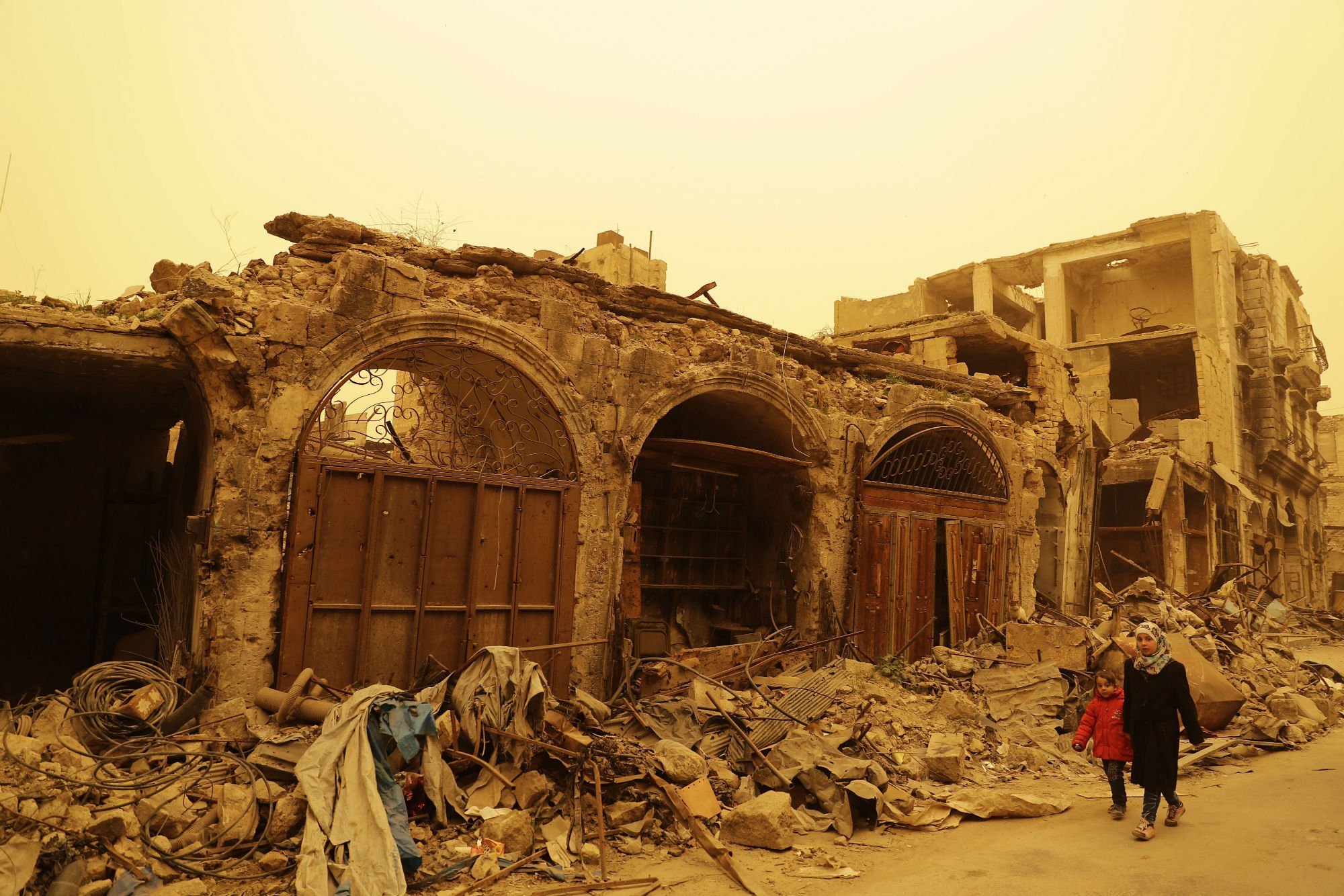A recent study published by Friedrich Ebert Stiftung examines how the Syrian conflict has transformed Aleppo, by deepening previous socio-economic divisions and setting-up preconditions for a new balance of power between the North and Damascus. Consulting with regional experts (like former Aleppo Project fellow Armenak Tokmajyan) and utilizing data collected from structured interviews conducted within Aleppo, Lebanon and Turkey, author Kheder Khaddour explores the fragile interdependence that existed between eastern and western Aleppo with the northern part of Syria. Khaddour further analyzes how the destruction of Aleppo goes far beyond destruction of the city to reshape domestic power structures. Ultimately, it has also changed the structure of Northern Syria, of which Aleppo was once the main economic, political and administrative hub, but now risks falling under the dominance of Damascus.
Deftly maneuvering through historical ties and allegiances, Khaddour exposes how the current ruins of Aleppo (the east depleted of the majority of its population and the west of its mechanisms by which it used to function as the administrative, economic and political hub for northern Syria) are in fact the “cleansing of an urban population unprecedented in the history of the modern Middle East”.
The traditional social and economic gaps that existed in Aleppo between an enriched and powerful business class and the residents of the East and countryside, erupted into political and military divisions when rebel forces invaded the city in 2012. The presence of rebels in Aleppo’s urban space provoked distinctive reactions. The rebels were able to integrate more easily into the local population in the east as it was driven by grievances and the west more concerned with self-preservation. Subsequently, the east, under rebel control, was targeted by a brutal regime-led bombing campaign that resulted in massive population displacement. By December 2016, the regime had regained complete control over the city following an agreement to evacuate all residents from the opposition neighborhoods.
The resulting separation of formerly interdependent communities of industrialists and workers deeply damaged Aleppo’s once dynamic economy. In the place of large-scale textile production that was the regions’ leading industry before the conflict, traders in the war economy and real estate speculators have arisen and amassed substantial wealth, leaving much of Eastern Aleppo in ruins and consequently destroyed much of the productive base on which Western Aleppo depended.
A completely new Aleppo will emerge from the conflict, one that is subordinate to Damascus. Khaddour argues that in such a scenario donors will find the new business elites who emerged from the war to be their only counter-parts and that reconstruction aid should be strictly monitored and based on certain conditions: no security restrictions placed upon the return of refugees and IDPs and the involvement of independent Syrian technocrats in the reconstruction process as an oversight function for its spending and management.
To read the full report, click here.
 The Aleppo Project
The Aleppo Project